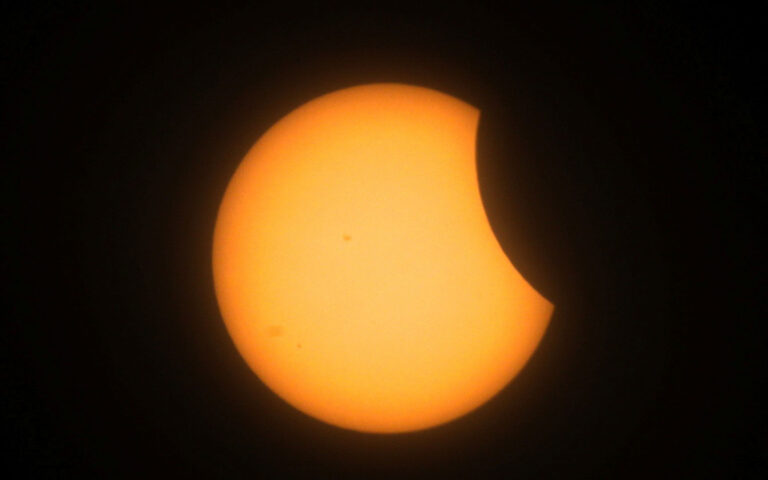Yesterday's total solar eclipse provided a rare sight, revealing the “hidden” crown of our neighboring star.
When the moon's dark disk obscured the sun, it revealed some clear reddish edges in the outline.

“There was an impressive bulge during this eclipse,” said Lisa Upton, a solar scientist at the Southwest Research Institute in Boulder, Colorado.
A total solar eclipse is not a “spectacle” in our solar system. Earth has the advantage that our Moon is about 400 times smaller than the Sun, and at the same time 400 times closer to it, so some of its transits obscure the solar disk with symmetrical precision. It's a sight that can't be seen from the surface of Mars, for example, with its two small moons, Phobos and Deimos.
A total solar eclipse is the only time Earthlings can see the Sun's outer atmosphere, its corona: a majestic ring of light around the dark Moon.
Scientists had expected that seeing the corona yesterday would likely be of special importance, as the eclipse coincided, in time, with the sun's maximum solar activity, which follows an 11-year cycle.
Their predictions were finally confirmed when they noticed a huge bulge visible at the bottom of the star.

Why are they red?
Solar bulges are huge rings of plasma on the surface of a star They can form within a day and remain for several months.
These bulges are often red because the plasma emerges from deeper layers of the Sun's atmosphere, such as the chromosphere, where abundant hydrogen at high temperatures emits red light.
As early as the 18th and 19th centuries, scientists were aware of bulges during eclipses, which were previously thought to be merely “clouds in the lunar atmosphere.” It is now known that clouds cannot form in the extremely thin lunar atmosphere.
With information from the Associated Press





More Stories
In Greece Porsche 911 50th Anniversary – How much does it cost?
PS Plus: With a free Harry Potter game, the new season begins on the service
Sony set to unveil PS5 Pro before holiday season – Playstation